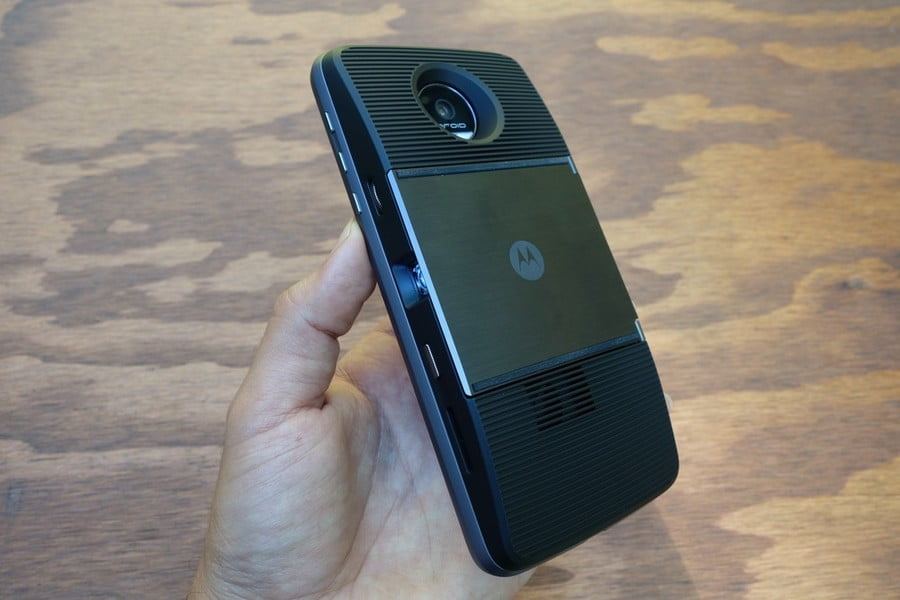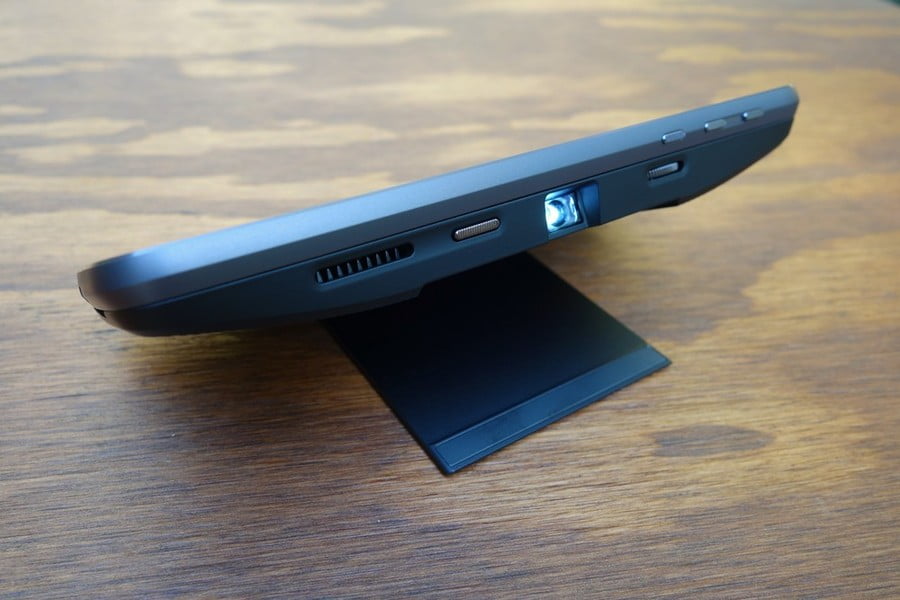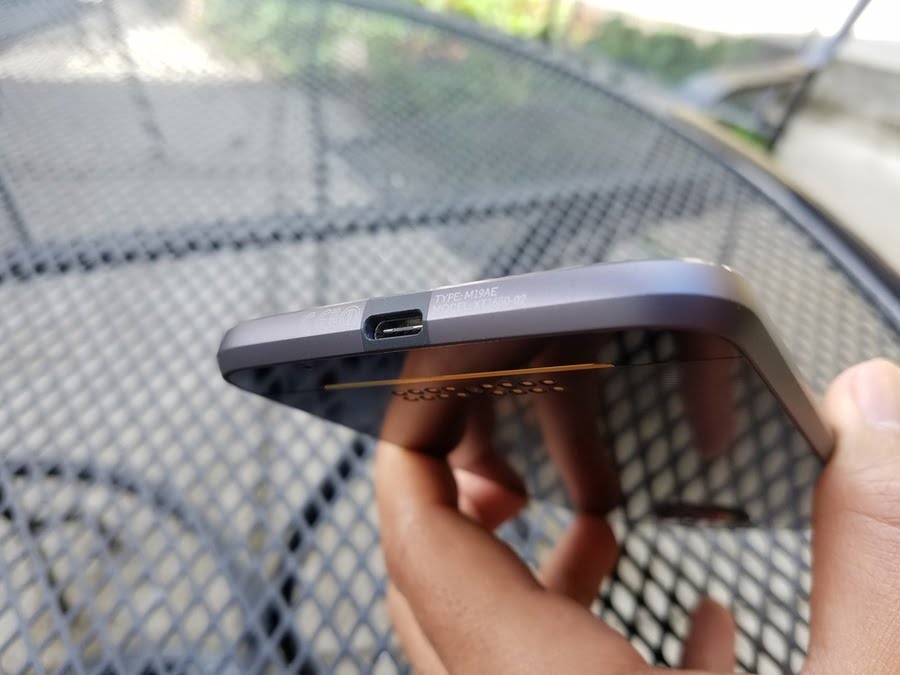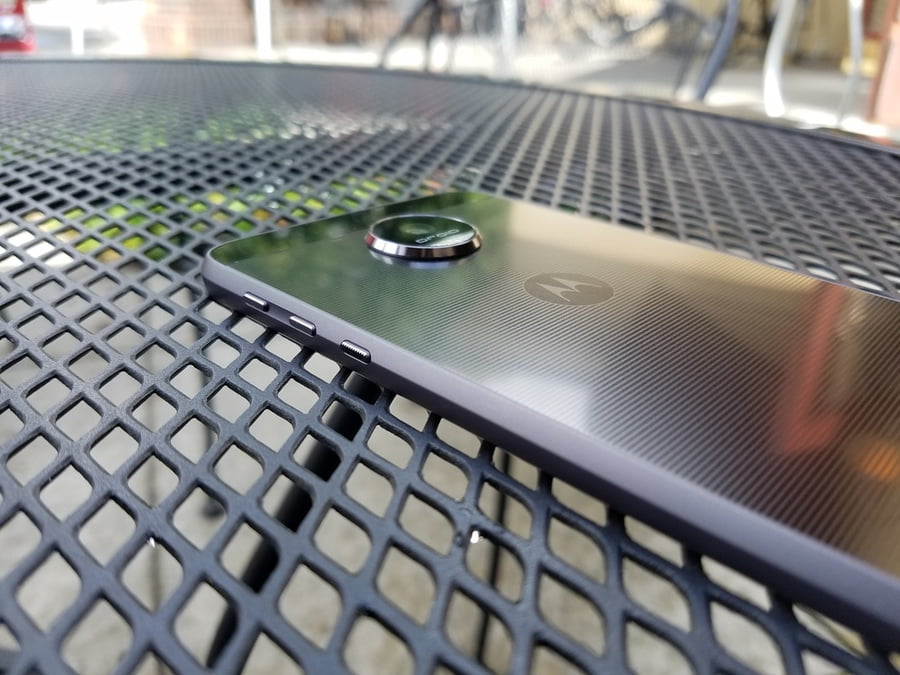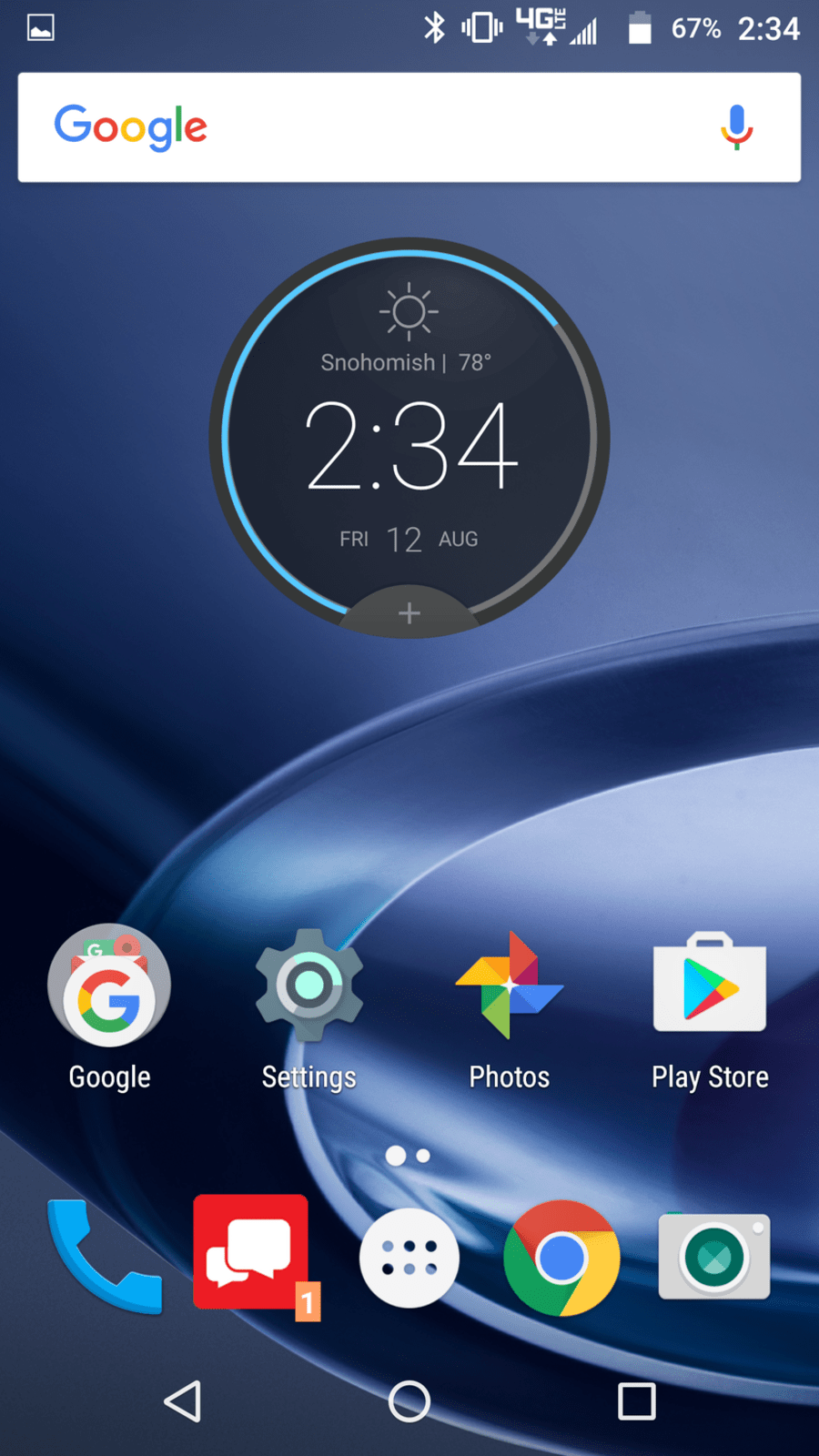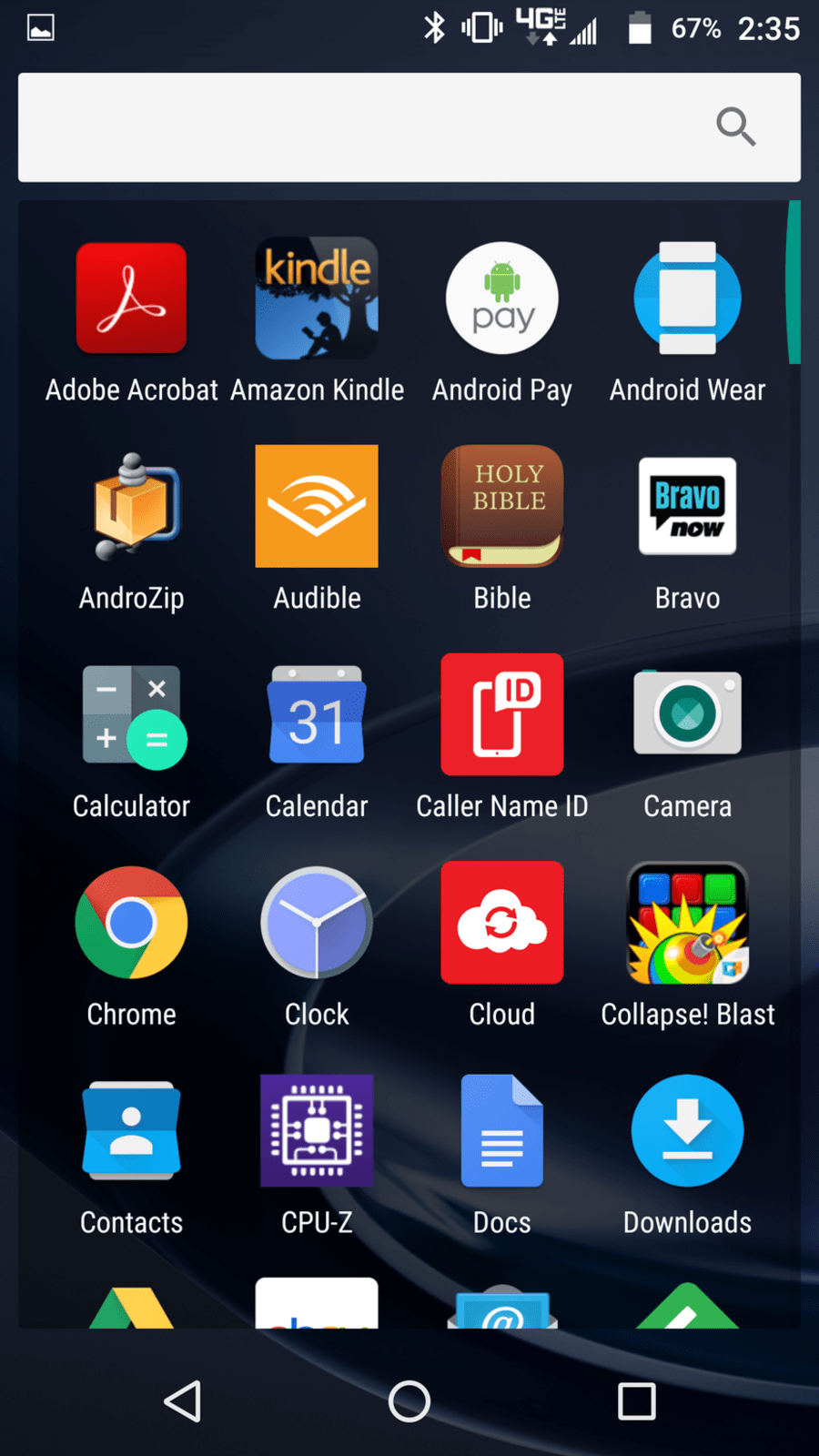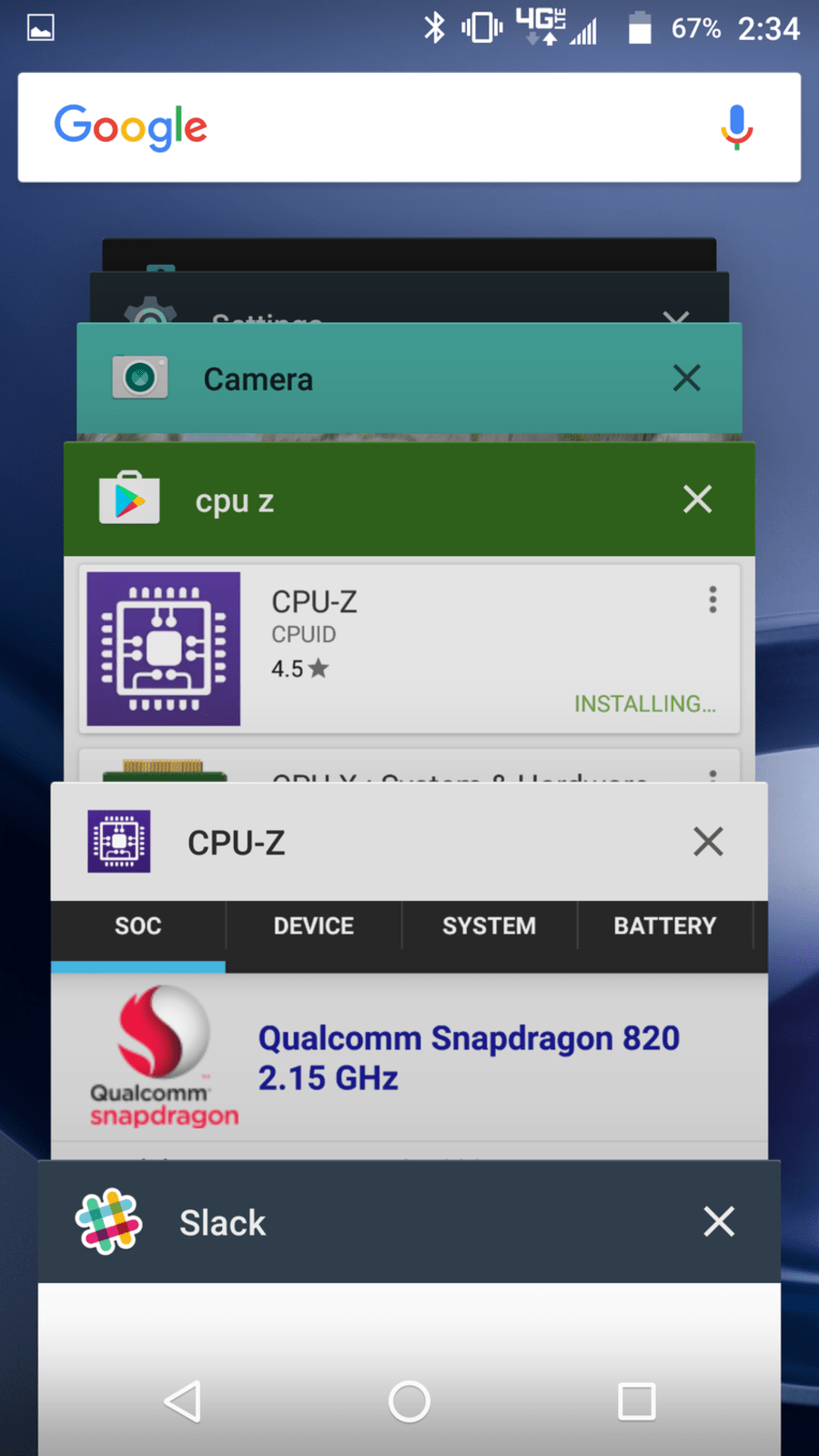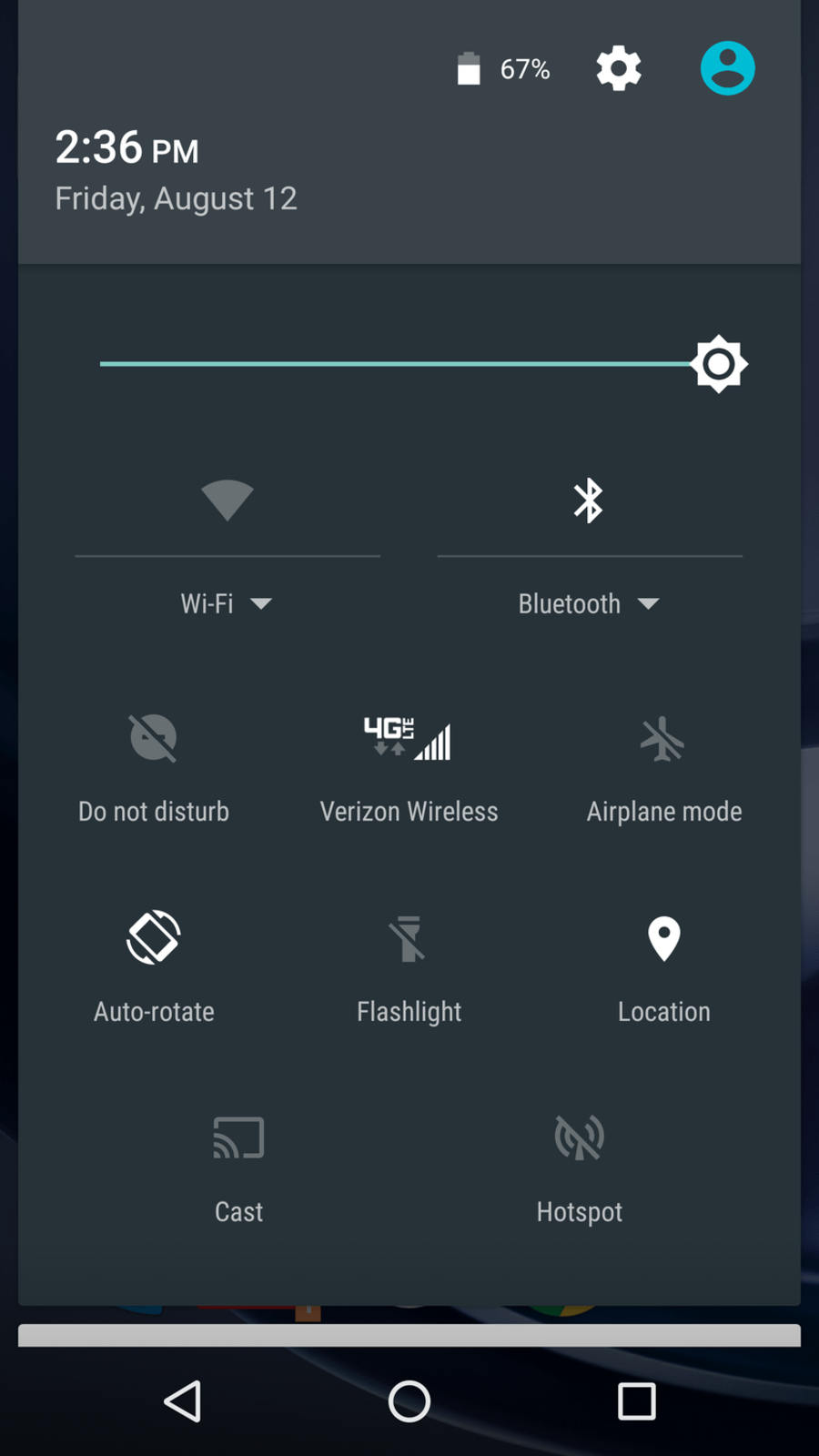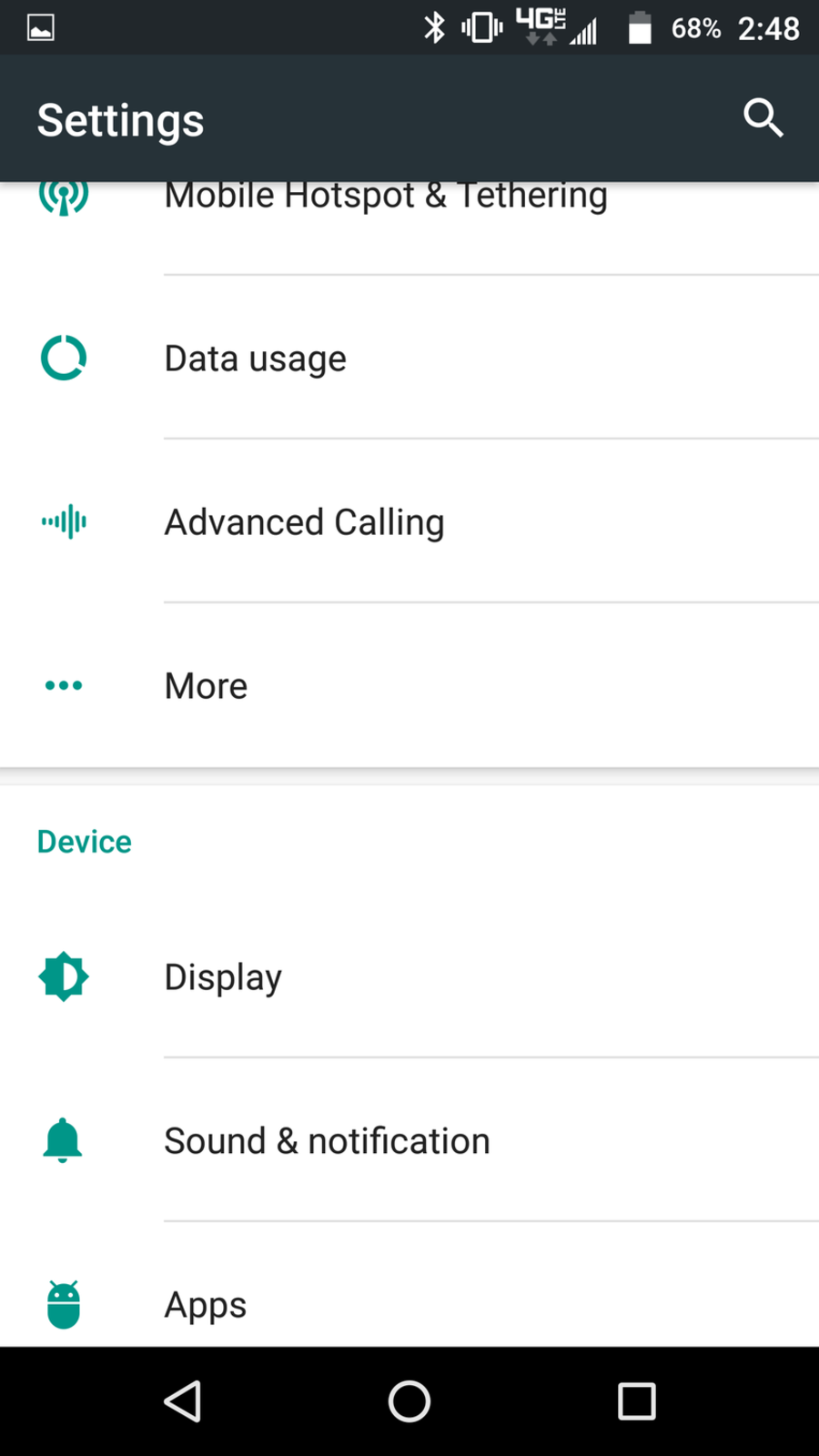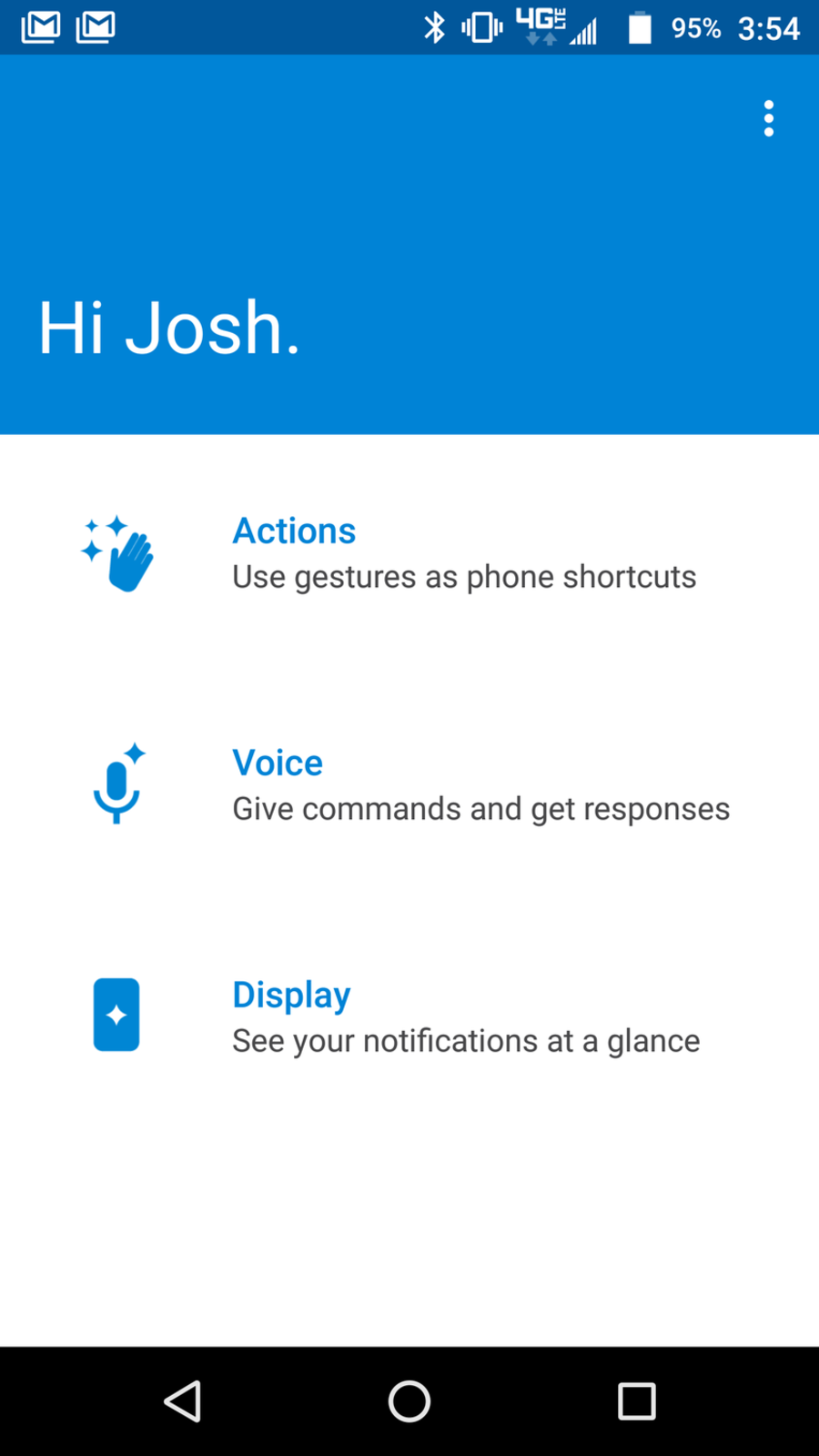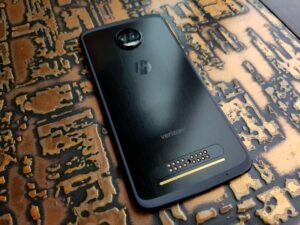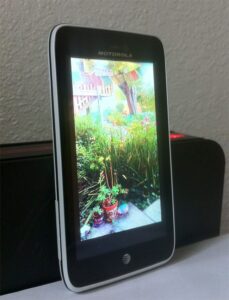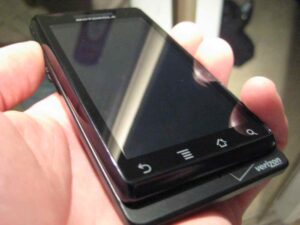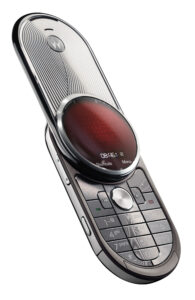Sure people love the best Verizon smartphones, but Motorola is doing great too. Motorola has been doing a great job remaining relevant in the midst of some stiff smartphone competition. The company was becoming a dying breed as the success of the Droid line of Android phones dwindled, but it sprung back up with the original Moto X in 2013. The successors that followed were solidly crafted and pushed value whereas other flagships continued to charge an arm and a leg, easily making the Moto X a popular Android phone.
Alas, when Lenovo acquired the company, its couldn’t help but shake things up. A result of that is this year’s new Motorola top dog – the Moto Z. This new flagship comes in two flavors: a thinner Moto Z and thicker Moto Z Force. They’re almost the same, with the latter having a bigger battery, higher resolution camera, and ShatterShield screen protection. Verizon was kind enough to send us the higher spec’d Force model, which is naturally labeled as a Droid. Let’s find out if this shake up is a step in the right direction, in our Moto Z Force Droid Review.
Overview
Price: $720 or $30/month for 24 months on Verizon
Available: July 2016
Model: Moto Z Force Droid
Summary: Motorola drops in a revamped flagship this year with the Moto Z, upping the premium build and adding a neat modularity trick. The top-end Moto is now properly equipped against the competition, but could still use refinements here and there (namely, in the camera and design).
What We Liked:
- Premium, unique, and thin design
- One of the best flagships for battery life
- Modularity opens doors to clever accessories
- Top-notch display
- Minimal software bloat
What We Didn’t:
- Fragile glass back and considerable camera hump
- Camera quality falls short of competition
- Iffy physical button ergonomics
- Too much bezel around the screen
Moto Z Force Droid Specs
| Display | 5.5″ AMOLED, QHD (2560×1440 pixels), Shattershield |
|---|---|
| Chipset | Qualcomm Snapdragon 820 (quad-core, 2.15 GHz) |
| Memory | 4GB of RAM |
| Storage | 32GB internal with microSD card support up to 2 TB |
| Rear Camera | 21MP, f/1.8, 1.12µm, OIS, laser auto-focus |
| Front Camera | 5MP, f/2.2, 1.4µm |
| Battery | 3,500 mAh (non-removable) |
| Software | Android 6.0.1 with a light Motorola UI |
| Colors | Black or White |
| Price | $720 or $30/month for 24 months |
| Buy Now |
Design
The design of the Moto Z is an overhaul from the stapled look of the Moto X in the past years. Some things are for the better and some, not so much. We’ll cover those details in our tour.
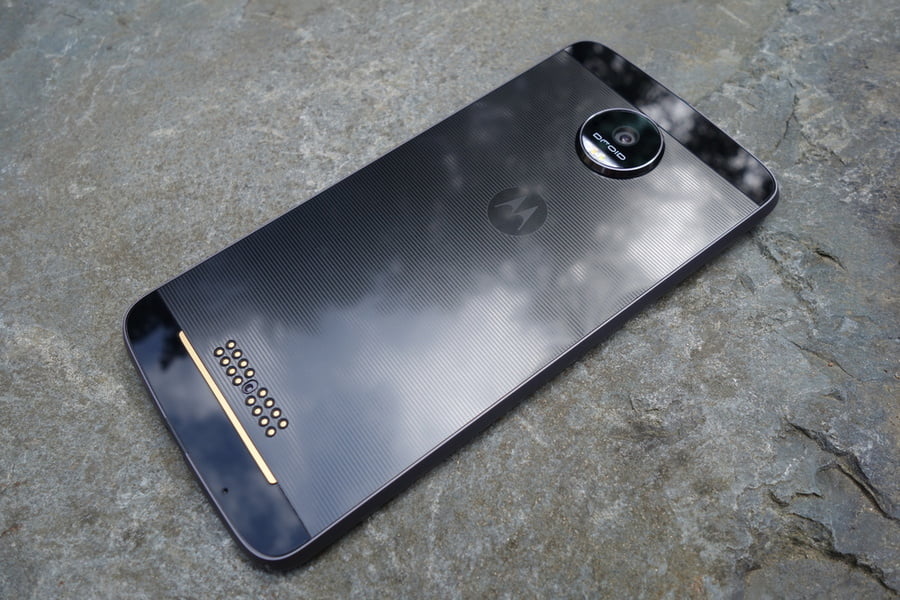
Past Moto phones have had quite a selection of back cover options, between different colors of plastic, leather, or wood. That customization is dumped for the Moto Z, as you’ll only find a glass back and a choice between black or white devices. This also means that the back is now flat, not curved anymore.
The Moto Z certainly ups the premium factor, but we felt like the preceding design was more practical. It fit in the hand better, and the felt more durable. Though, we can’t fault Motorola for the move. The market clamors for better materials, and this the trade-off.
Read: Best Smartphone Plans
But we imagine that many consumers won’t be a fan of that considerable camera hump that sticks out like a sore thumb. It’s easily the largest one out there. However, there’s a reason for that. The Moto Z has a neat, modular-like trick in its design. Divert your eyes downward and you’ll catch a strange series of metal pins, used for coupling add-on accessories. Moto’s answer to modularity is back plates that clasp onto the back of the phone (magnetically, and utilizing the camera hump as a support) to provide different functions, dubbed Moto Mods. Some of the covers that are currently available can append an external speaker, battery pack, and even a projector to the phone.
Motorola also simply offers shells of different materials (plastic, wood, or leather) and colors, reclaiming some of the customization potential that past phones have had.
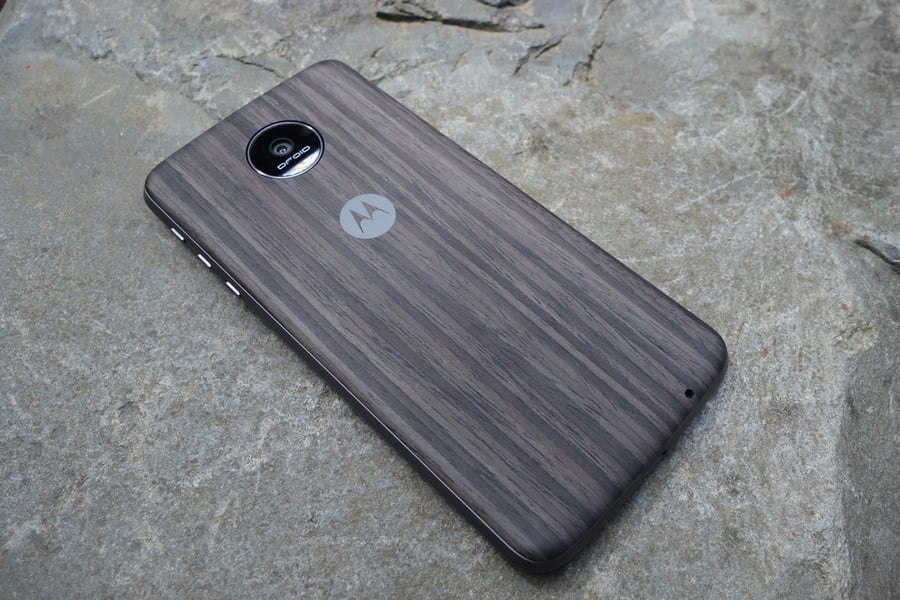
Despite the Moto Z Force being the thicker of the two variants, it’s still satisfyingly thin, at about 7mm (not counting the camera hump). That increase of 1.8mm from the Moto Z gets you 900 mAh more battery – a trade-off we feel most will prefer. The thickness of the camera hump is the same on both models, to support the modular covers. A rounded, metal frame makes up the perimeter of the device.
We weren’t big fans of the physical button placements on the right side. They’re a reach to get to, and coupled with requiring a firm press, it can feel like the phone wants to rotate out of your hands when you use them. The square fingerprint reader on the bottom of the front works well, though. We were worried that its small size would impede on the scanning performance, but we didn’t observe any problems.
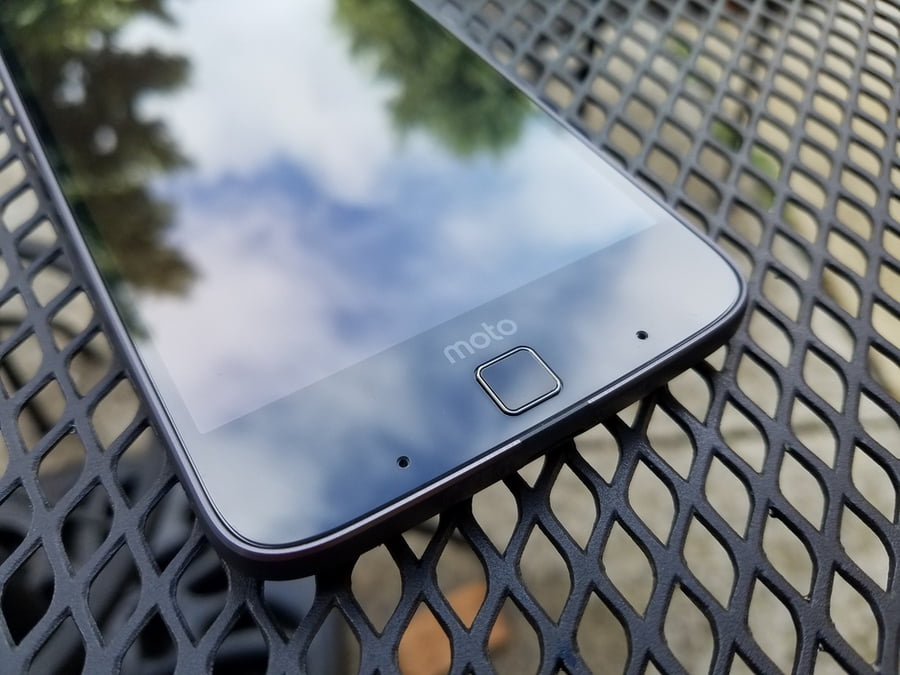
An important note about the Moto Z is that it’s the first smartphone out the gate without a headphone port. We’ve heard murmurs about this incoming trend (it has been said for a while that the upcoming iPhone will also drop it), and it’s finally a reality. However, if you’re not ready to switch to USB Type-C headphones, Motorola generously includes a Type-C to 3.5mm audio port adapter.
Performance
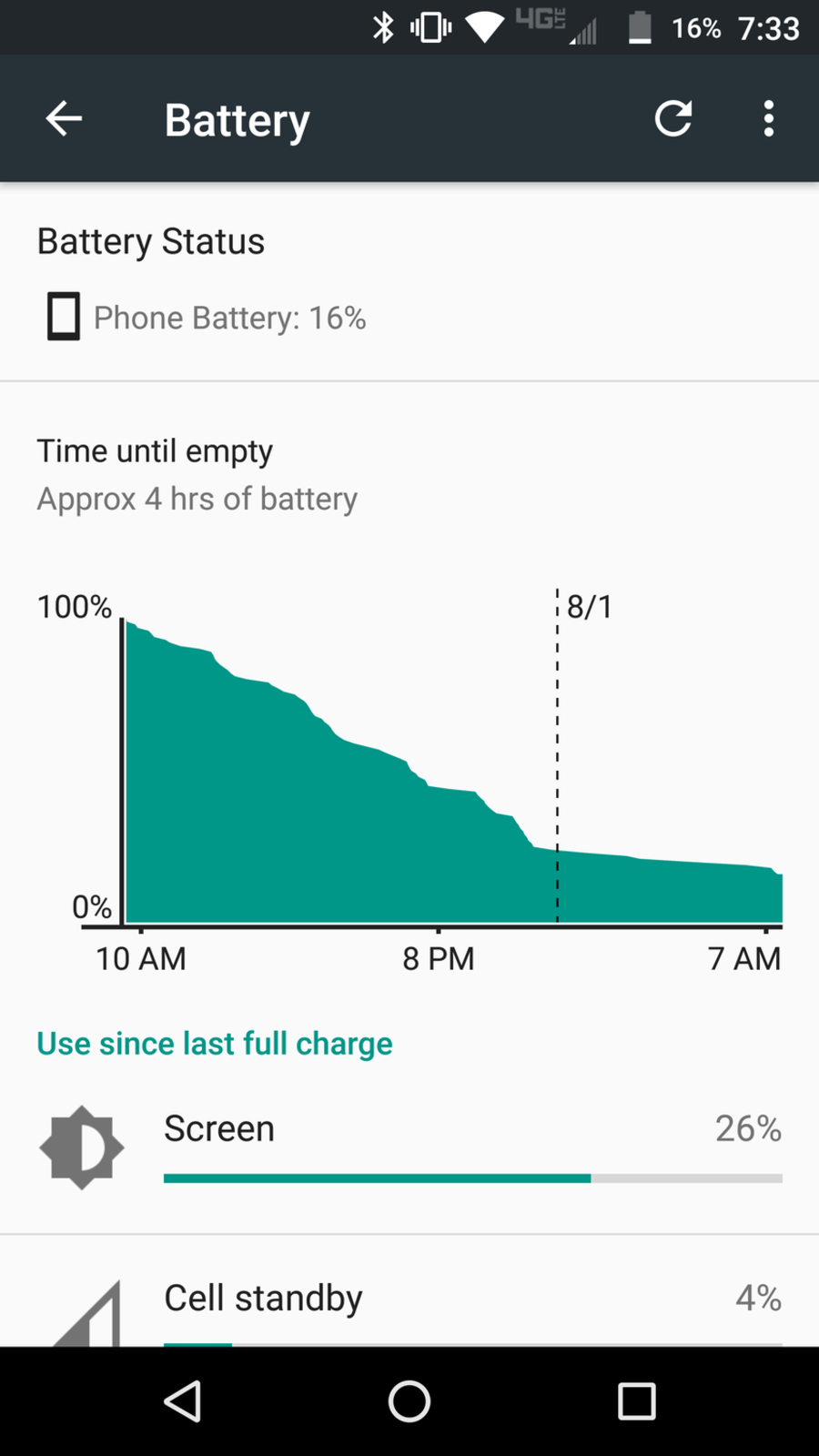
Motorola nails down the Moto Z’s flagship status by packing the current top dog chipset from Qualcomm, the Snapdragon 820 (coupled with 4GB of RAM), which you’ll find on other high-end Android phones, such as the Galaxy S7, LG G5, and HTC 10. Therefore, performance on the Moto Z flies as good as any equivalent powerhouse today can. And being that the UI is mostly stock, all the operations are smooth, quick, and lag-free.
Storage-wise, you’ll get a base of 32GB internally. Verizon doesn’t offer the 64GB version. But being that there is microSD card expansion support up to 2 TB, that should be of little consequence.
As we mentioned earlier, this thicker Moto Z variant has the battery advantage. We’re looking at a 3,500 mAh capacity, which is considerable for a flagship in this day and age, but for those keeping track, it’s just shy of the 3,600 mAh in the Galaxy S7 Edge. Still, most users should have no problem getting over a day of life. Motorola also doesn’t forget about the latest fast charging trends, as that cutting edge USB Type-C port includes what the company refers to as TurboPower. Despite the fancy name, the Moto Z’s charging rate is on par with others that support Quick Charge 3.0, which gives you about 60% charge in 30 minutes. We’ve also compiled this Moto E5 Display Battery Radio review for those who want phones with a higher battery life.
Display
The Moto Z sports a 5.5″-sized display that uses an AMOLED panel with QHD resolution (2,560 x 1,440). All these specs are where they should be for a top-end smartphone, and in the real world, the it’s as satisfying to the eyes as it sounds.
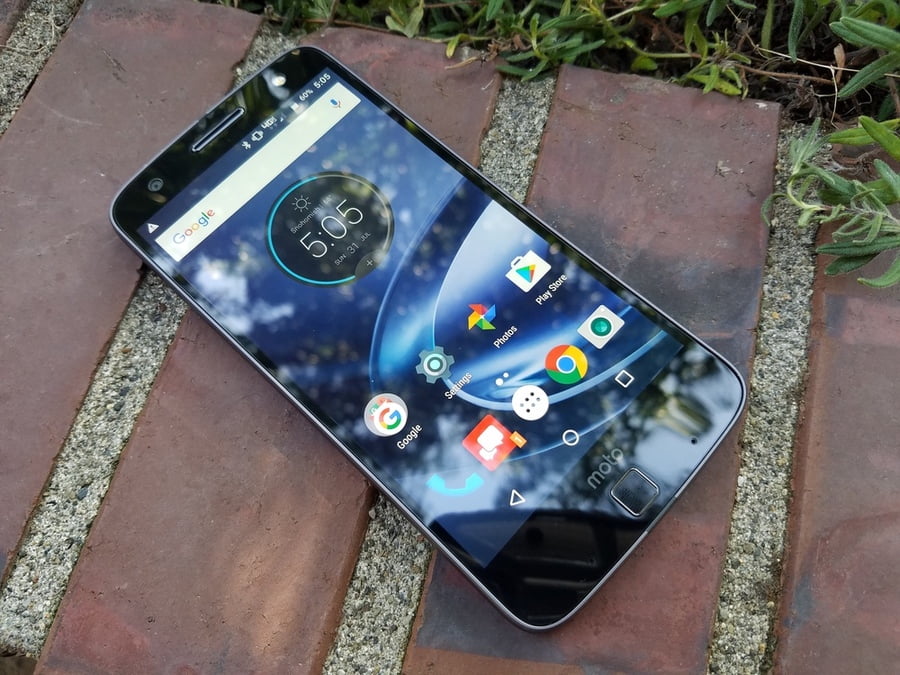
Color reproduction is spot on and whites, while not perfect, are well done for an AMOLED panel (we actually think it edges the Galaxy S7 in this respect). Images are lively due to an eye-pleasing pop from colors, but some folks may not prefer this amount of vividness. Motorola includes a color mode adjustment, but unfortunately it only lets you choose between standard and vibrant, with the former being way too dull in our opinion.
An important feature about the Moto Z Force’s display that some consumers may overlook is its ShatterShield durability. Motorola debuted this glass reinforcement technology on last year’s Droid Turbo 2, which comes with the bold claim that the screen will not crack or shatter from drops. The company even goes so much as to guarantee it.
Camera
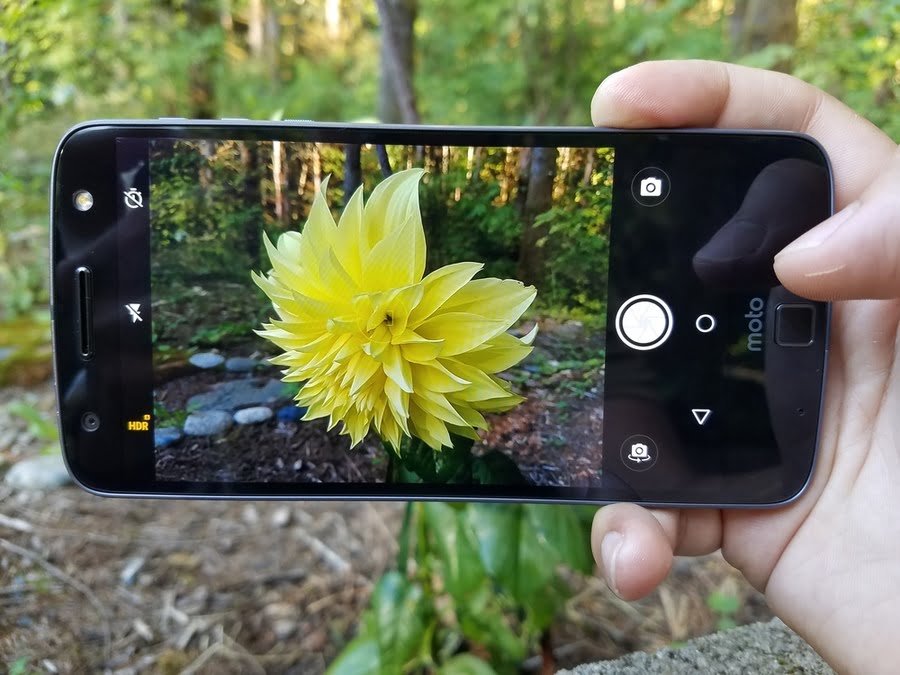
The Moto Z Force’s rear camera holds a lot of promise on paper, with a whopping capture resolution at 21 MP, f/1.8 lens aperture, laser and phase detection auto-focus, OIS, and a dual-LED, two-tone flash. The only underlying spec that doesn’t keep up is the 1.12µm pixel size. Other flagship have increased that size to 1.4 – 1.55 µm, further giving them a low-light advantage.
Nonetheless, the Moto Z Force can consistently pump out quality pics. They’re sharp, clear, and vibrant. A few sample shots are provided below.
In the nitty gritty, we feel it could do better in high dynamic range situations (bright lighting is too often blown out). The sensor also shows limitation in low-light situations, but that’s expected. So, if the quality of the camera maters to you, then this Moto Z2 Force Smartphone review may be a worthy read.
Software
Loads of Android fans have loved the fact that Motorola chooses not to bog the Android OS down with additional software that doesn’t add much value. I’m glad to say that the trend continues with the new Moto Z. But that said, it’s not completely stock Android 6.0 (aka Marshmallow). Motorola made some light modifications, such as a transparent app drawer and the ability to rotate the UI into landscape mode.
Past Motorola phones were also given the nifty Moto app, which the Moto Z adopts (and we’re glad). The app provides complementary software that enables a multitude of gesture actions, custom voice commands, and the lovely Moto Display (which displays a dimmed peek at your notifications while the phone is off simply by waving your hand in front of it).
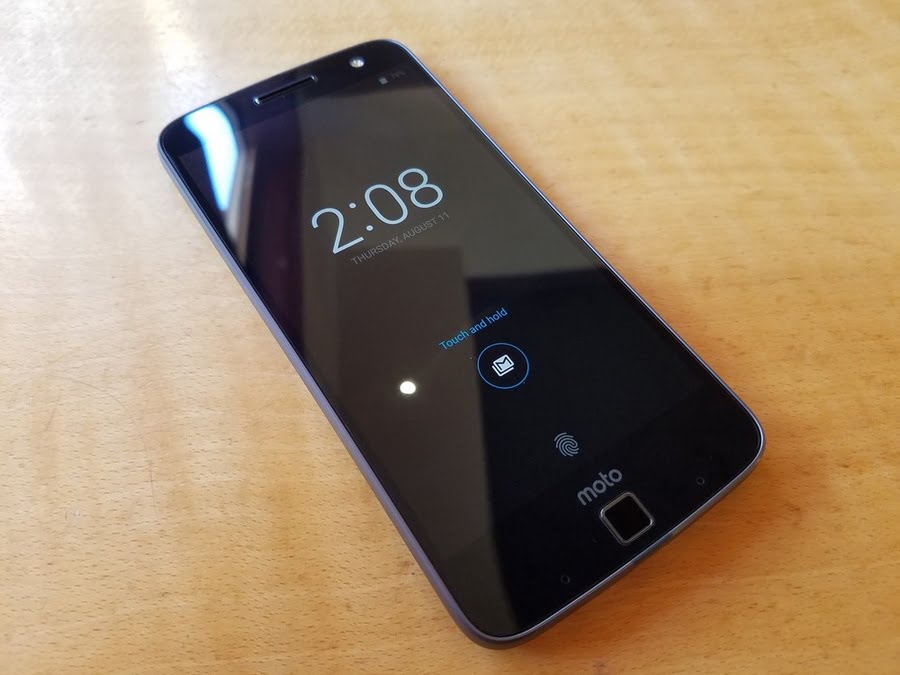
Final Thoughts
The Moto Z Force is a solid Android phone through-and-through, and it’d definitely be one of our top recommendations if you’re in the market. The specs alone stand up with the top-end competition, but it doesn’t just settle at that; the sizable 3,500 mAh battery and awesome potential of the Moto Mods puts it a step above. The only caveat is that there aren’t a wide variety of Mods just yet. We feel if Motorola puts forth the investment into them, it could give the phones a serious advantage.
See Also: Best Verizon Smartphones
Related Articles:
